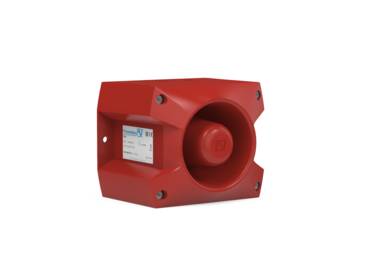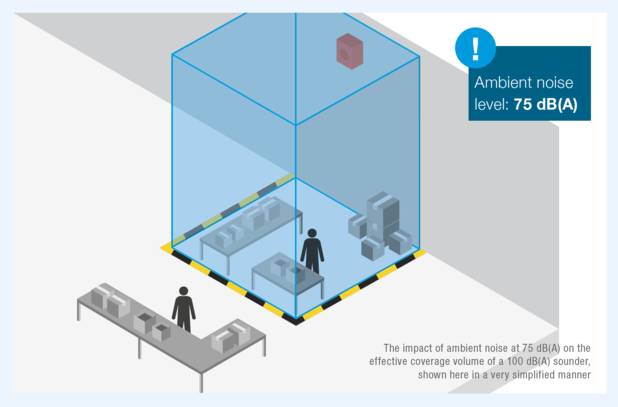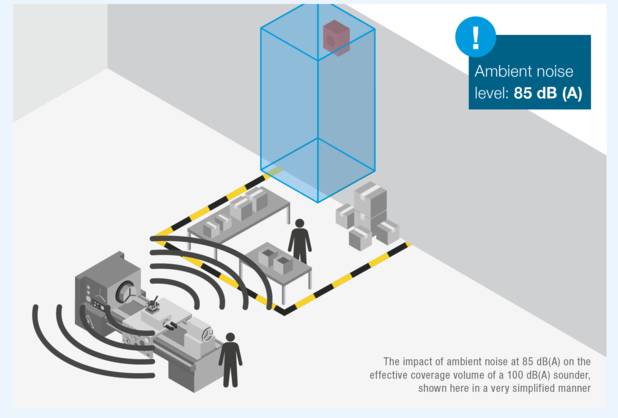AUDIBLE SIGNALING

Horns and sirens, also known as “sounders”, are tone generators that output an audible signal when a voltage is applied to their input power terminals. Sounders are self-generating – meaning that the tones are pre-programmed into their circuitry and the sound is simply emitted when power is supplied.
Sounders are widely used for generating evacuation alarms in the event of fire, toxic gas leak, or chemical spill. Other applications for sounders include machinery start-up alarms, back-up warning systems, process upset signals, heavy equipment movement, moving roof systems, crane movement, and movement of doors, gates, and barriers.
Sounders typically generate a variety of tones that can be user-selected. Some units are capable of delivering multiple tone stages. For example, one tone stage may signal evacuation, while a secondary tone stage may signal “all clear” or OK to return.
Ambient noise can influence safety
Whether or not the audible signal from a sounder is successfully perceived is not just dependent on the output sound level generated and technology used to create the alarm signal. Ambient noise levels and sounder placement location are crucial elements that should not be overlooked.
The adjacent example illustrates the effect on coverage volume of an 100 dB(A) audible signaling device due to a 10 dB(A) change in ambient noise level. Increasing from 75 dB(A) to 85 dB(A) shows that the warning signal will not be successfully perceived.


The 3D-Coverage values show that the effective covered area is significantly reduced when the ambient noise level rises.
If the alarm system designer does not take all aspects into consideration, the consequences can spell danger for people in the surrounding area.
